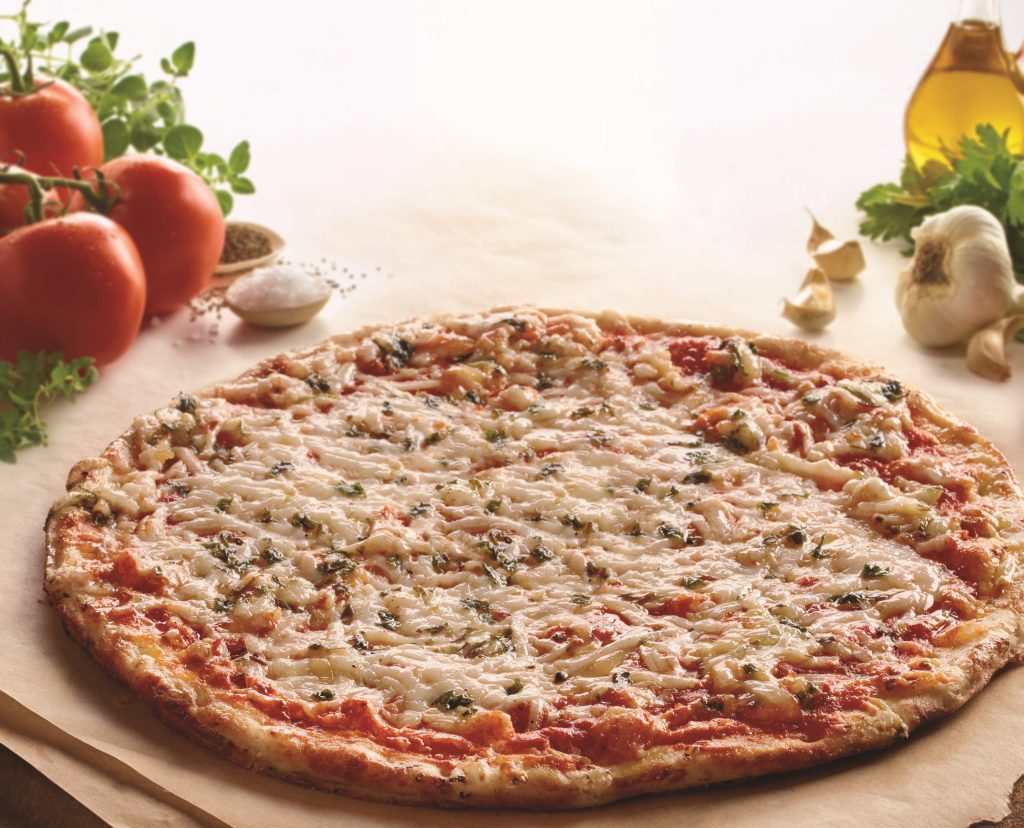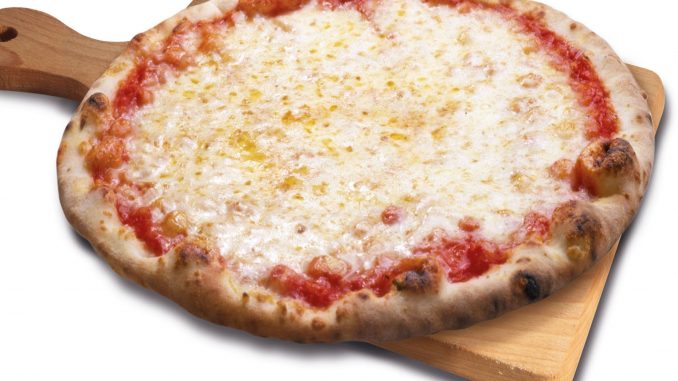A Piece of the Pie
February 2, 2020 | 8 min to read
The U.S. pizza industry, valued at over $47 billion, is thriving as supermarket delis embrace this lucrative segment. Retailers are enhancing their offerings with fresh, on-site pizzas made from premium ingredients, aligning with consumer trends toward healthier options and innovative flavors. There's a shift from convenience-focused meals to gourmet experiences, including unique toppings and ethnic influences. As consumers prioritize quality and healthier choices, deli pizzas reflect a cleaner nutritional profile and evolving flavor trends.

For supermarket delis that focus on quality and trends, the ever-evolving pizza segment can be quite a lucrative venture.
Total revenue in the U.S. pizza industry is upwards of $47 billion, with annual growth on the rise, according to New York City-based IBISWorld.
“As more and more grocery retailers are looking to compete with fast food/fast casual restaurants, the deli department is starting to offer more hot food options for carryout or dining in,” says John Leonardo, senior director of marketing at Palermo Villa Inc., Milwaukee, WI. “Pizza, in many instances, is an anchor item within the deli/ prepared foods set.”
Today, retailers are selling pizza by the slice and whole pizzas that are baked and ready to be consumed at home or immedi- ately at the store.
“Some retailers are making the piz- zas from-scratch or nearly from-scratch behind the counter to provide more of a pizzeria experience for the consumer,” says Leonardo. “When labor costs become more of a focus, some retailers will offer fresh baked pizzas/slices that were made off-premise but baked in-store.”
Today’s Trends
There are a number of new devel- opments in the pizza segment, with foodservice trends influencing retail.
One prominent trend is in healthier products.
“[We’re seeing an increase in] refrigerated bake at home pies, ready-made pizza sauces to use at home and cauliflower crusts,” says Umberto Marconi, vice pres- ident, Pomì USA, Inc., Matawan, NJ. “There’s been progressive segmentation in flavors, cheese and toppings. Consumers are paying more attention to the quality of the ingredients and that is also contribut- ing to the evolution of the flavor profiles. Dietary restrictions and preferences are also impacting the segment, along with the rest of the food industry.”
In addition, premium ingredients are making more headway in retail channels, as consumers seek to purchase or recreate restaurant-style pizzas.
“We’ve had lots of requests for premium style take-and-bake pies, along the lines of what we’re baking,” says Brad Sterl, CEO/ president, Rustic Crust, Pittsfield, NH. “Unique and premium toppings are leading into vegetarian protein or imitation meat products. In years past, there has been more push back due to pricing sensitivity, but now this is less of a concern, as pre- mium toppings and higher end ingredients are at the forefront.”
Jim Viti, vice president, sales and mar- keting, DeIorio Foods, Utica, NY, agrees. “’Healthy Indulgence’ is a term I would use for product trending,” he says. “Consumers are looking to take flavor up a notch with- out the post-meal guilt. An example might include a plant-based broccoli or cauli- flower thin crust topped with balsamic, prosciutto and arugula, enhancing flavor into each bite.”
While the focus in the past was on meal replacement and convenience, including easy prep, it is now more about innovative ingredients and taste.
Ethnic twists on this old favorite also are becoming more prevalent.
“Pizza toppings are becoming a bit more creative, with Mexican or Asian toppings,” says Mark Snyder, national foodservice sales manager, ItalCrust, Newton, MA. “Most deli pizza is either just cheese that customers can top themselves or take-and- bake products.”
In addition to healthier toppings and crusts, a better overall nutritional profile is becoming more common with deli pizzas.
“The cleaner the label, the better,” says Justin Ring, director of sales for Schaumburg, IL-based Nation Pizza and
Foods. “All-natural ingredients, a vegeta- ble crust and gluten free are three points where there is a market.”
Flatbread pizza also is an option more delis are incorporating, along with smaller pies or thinner crust pizzas that can be eaten as an appetizer or snack.
“People are snacking more, taking a look at it as a snack before dinner rather than pizza as a meal solution,” says Enrico Piraino, president of Belmont, NC-based DePalo Foods. “In addition, flavor profiles seem to be getting stronger, with Buffalo chicken and Greek flavors.”
Sauces are not just tomato based, with pesto and white sauces taking hold.

Pizza Products
There are a number of products, from ingredients to whole pies, that retailers can incorporate into their departments.
Pomì offers an authentic Italian pizza sauce made from Italian fresh tomatoes that comes in a 14-ounce BPA-free can.
“We recently updated the recipe to make it more appealing for the evolving consumer taste,” says Marconi. “Pomì‘s other products, from strained to chopped or finely chopped tomatoes, with no salt added, are also great for home chefs; it’s product development department focusing easy to customize your experience while on new infusions and components, such as baking your pie at home.”
Rustic Crust will be launching plant based protein pizza toppings this year.
“We see exciting momentum in the alterna- tive pizza segment by focusing on specialty items that are moving towards the main-
stream,” says Viti at DeIorio. “Examples of products that service this category range from the wildly popular cauliflower pizza shells to the rapidly expanding snacking category with our broccoli cheddar bread-
sticks. This alternative revolution has our product development department focusing on new infusions and components, such as sweet potato and chickpea offerings, and vegan and certified organic pizza dough.”
Italcrust offers a 14-inch cheese pizza line for customer or deli retailers to customize themselves.
“The supermarket doesn’t want to buy 18 different flavors and carry more SKUs,” says Snyder. “Customers can utilize left- over ingredients already in the supermarket, such as arugula from the salad bar, veggies
from the produce department, meats from
the meat department, etc.”
DePalo Foods offers pizza-related prod- ucts, such as calzones, Stromboli and pinwheels as well as organic pizza dough.
Palermo Villa, Inc. has created a 14-inch deli edition of its Screamin’ Sicilian brand.
“It provides a premium experience that is more representative of what consumers would find in a pizzeria,” says Leonardo. “This line contains higher quality ingre- dients, such as whole milk Mozzarella cheese, is abundantly topped, and is avail- able in five varieties.”

Getting the Word Out
Success in the pizza segment is depen- dent on creating a destination with appropriate marketing and merchandising.
“A chained/coordinated promotion where all the premium ingredients are pro- moted/sold together would help—dough, sauce, Mozzarella, extra virgin olive oil, fresh basil,” says Marconi at Pomì. “Having all the ingredients close to each other makes the shopping experience extremely conve- nient for the supermarket deli consumers. Educating on the origin of the ingredients and offering healthy options also drives consumer attention.”
The deli area has traditionally been a consumer favorite for mealtime ideas and solutions, and pizza lends itself naturally to that concept.
“First and foremost, the area needs to be visually enticing,” says Viti at DeIorio. “A typical consumer on the go may not know exactly what they want when they enter, but they’ll know it when they see it. A good destination is designed to excite the senses—it pleasantly surprises on a regular basis. It doesn’t abandon the norm but it allows the consumer to step out of their comfort zone now and again to expand their palate.”
Pies can be marketed in service or self-serve cases.
“Putting a private label sticker on itto make it look freshly made that day is important,” says Snyder at Italcrust. “Pizza is popular and a food people want then they see it.”
The perception of fresh is key, especially with the stiff competition from foodservice and the frozen case.
“There is opportunity in the deli if it’s done right,” says Ring at Nation Pizza.
“If a retailer can stand apart, instead of being a me-too, there are ways to make pizza look and taste different, and they can take advantage of the freedom to be creative.”
Piraino at DePalo Foods says the grab-and-go section is the most common place for pies to be sold in the deli.
“The foodservice side of pizza is about $38 billion, compared to retail at $6 billion, the latter including frozen pies,” says Piraino at DePalo Foods. “But not many items in the deli are as affordable to feed a family like pizza, and convenience also is a factor.”
Display and signage are key to driving the awareness in store.
“The supermarket retailers who do it best have prominent signage and displays for their deli pizzas,” says Leonardo at Palermo Villa. “With our Screamin’ Sicilian deli pizza, we partner with our retail customers on customized programs and provide our marketing and design expertise to create in-store point of sales materials to drive sales.
” There are very few categories within the grocery store where there are alter- natives that pizzerias offer. Therefore, it is important for the retailer to find creative solutions to keep the dollars in their stores.
He recommends bundling deli pizza with beverages or chips to create a value meal; special promotion prices; offering call ahead ordering; and incorporating limited time offers (LTOs) with unique flavors that
rotate throughout the year.
“As more national chain pizzerias become aggressive with their pricing and
promotional strategies, retailers need to be more creative and competitive to gain share of stomach,” says Leonardo. “Instead of thinking about deli pizza as just another item they sell, successful retailers will find ways to increase the value and convenience to the consumer.” DB
3 of 7 article in DeliBusiness Feb/Mar 2020

